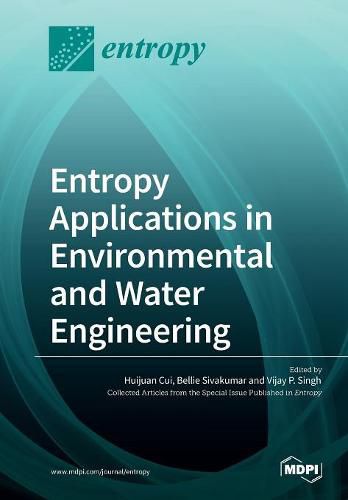Readings Newsletter
Become a Readings Member to make your shopping experience even easier.
Sign in or sign up for free!
You’re not far away from qualifying for FREE standard shipping within Australia
You’ve qualified for FREE standard shipping within Australia
The cart is loading…






This title is printed to order. This book may have been self-published. If so, we cannot guarantee the quality of the content. In the main most books will have gone through the editing process however some may not. We therefore suggest that you be aware of this before ordering this book. If in doubt check either the author or publisher’s details as we are unable to accept any returns unless they are faulty. Please contact us if you have any questions.
Entropy theory has wide applications to a range of problems in the fields of environmental and water engineering, including river hydraulic geometry, fluvial hydraulics, water monitoring network design, river flow forecasting, floods and droughts, river network analysis, infiltration, soil moisture, sediment transport, surface water and groundwater quality modeling, ecosystems modeling, water distribution networks, environmental and water resources management, and parameter estimation. Such applications have used several different entropy formulations, such as Shannon, Tsallis, Renyi, Burg, Kolmogorov, Kapur, configurational, and relative entropies, which can be derived in time, space, or frequency domains. More recently, entropy-based concepts have been coupled with other theories, including copula and wavelets, to study various issues associated with environmental and water resources systems. Recent studies indicate the enormous scope and potential of entropy theory in advancing research in the fields of environmental and water engineering, including establishing and explaining physical connections between theory and reality.
The objective of this Special Issue is to provide a platform for compiling important recent and current research on the applications of entropy theory in environmental and water engineering. The contributions to this Special Issue have addressed many aspects associated with entropy theory applications and have shown the enormous scope and potential of entropy theory in advancing research in the fields of environmental and water engineering.
$9.00 standard shipping within Australia
FREE standard shipping within Australia for orders over $100.00
Express & International shipping calculated at checkout
This title is printed to order. This book may have been self-published. If so, we cannot guarantee the quality of the content. In the main most books will have gone through the editing process however some may not. We therefore suggest that you be aware of this before ordering this book. If in doubt check either the author or publisher’s details as we are unable to accept any returns unless they are faulty. Please contact us if you have any questions.
Entropy theory has wide applications to a range of problems in the fields of environmental and water engineering, including river hydraulic geometry, fluvial hydraulics, water monitoring network design, river flow forecasting, floods and droughts, river network analysis, infiltration, soil moisture, sediment transport, surface water and groundwater quality modeling, ecosystems modeling, water distribution networks, environmental and water resources management, and parameter estimation. Such applications have used several different entropy formulations, such as Shannon, Tsallis, Renyi, Burg, Kolmogorov, Kapur, configurational, and relative entropies, which can be derived in time, space, or frequency domains. More recently, entropy-based concepts have been coupled with other theories, including copula and wavelets, to study various issues associated with environmental and water resources systems. Recent studies indicate the enormous scope and potential of entropy theory in advancing research in the fields of environmental and water engineering, including establishing and explaining physical connections between theory and reality.
The objective of this Special Issue is to provide a platform for compiling important recent and current research on the applications of entropy theory in environmental and water engineering. The contributions to this Special Issue have addressed many aspects associated with entropy theory applications and have shown the enormous scope and potential of entropy theory in advancing research in the fields of environmental and water engineering.